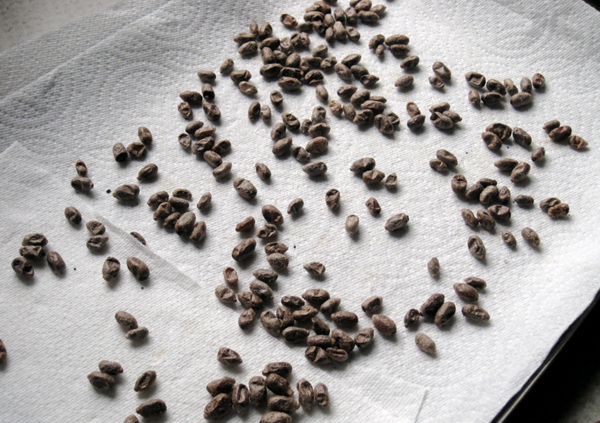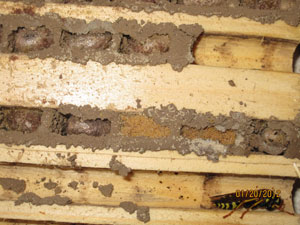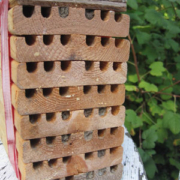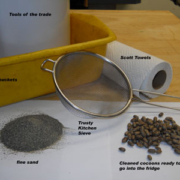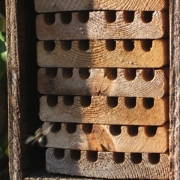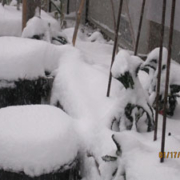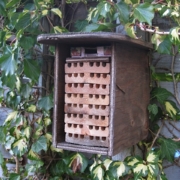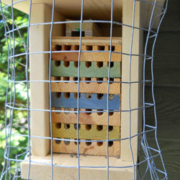Winter Care of Mason Bees
Diary of a Bee Nurturer
Last year at this time, I posted Diary of a Novice Bee Nurturer on our website, and now, having completed two full years with my Mason Bees, I’m tentatively deleting the word “Novice”. My bees and I have come a long way together.
In October, I brought the cocoons, still in their rows within the bee condo, into my garden shed. The outer shell of the house is nailed to the fence, so it remained outside, but to protect the cocoons from extreme weather I usually bring the innards of the condo into the shed; this could also be a cold garage, carport, etc. I put it inside a metal or plastic container just to keep rodents away, until the winter cleaning, which can be any time from November to February.
I have recently finished the winter cleaning of the cocoons, and was quite shocked to find such a quantity of yellow crud, mites, mould, and general detritus in my bee condo. Apparently, this is a rather bad case, for some reason I have a plethora of mites. Did I not clean them adequately last year? I did all the rinsing that was advised, but if I did leave mites on the cocoons, they would hitch a ride on the emerging bees and follow them back into the condo, and feast on the little mound of pollen which is meant to nourish the eggs.
This year I’ve been especially careful, and have learned that after the washing process, I can further protect them simply by changing the white paper towel upon which I put the cocoons to dry. I even changed the paper again after I had put them into the box for cold storage, and was surprised to see the telltale tiny black dots indicating mites.
Many of you may not have to fuss as I did; I live in a very natural forest-type area, and perhaps the humidity, leaf mould, and buggy environment increase my mite population?
My proud moment was when they were all cleaned, dried overnight in the cool garage then placed in my refrigerator in a paper box, then inside a plastic container where they’ll reside until it’s time to move outside to the release box near the bee condo when it’s reliably 14°C.
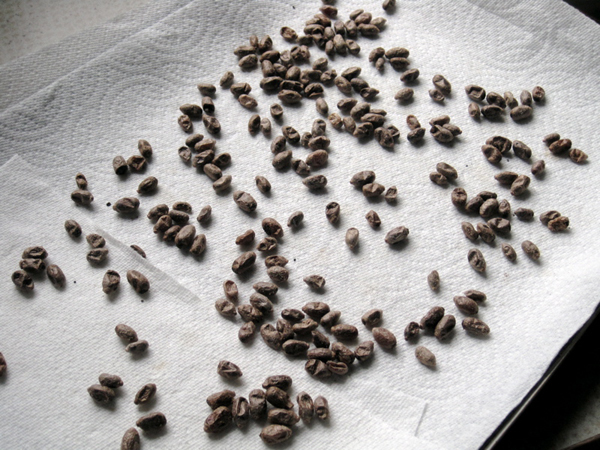
Cleaned Mason Bee Cocoons On Tray
Last year I had an intermediate step, instead of the fridge they were kept in my garden shed, where I anticipated further cold weather. A little burst of spring caught me off guard, and to my chagrin, I found the bees hatching in the shed, crawling on my tools and clinging to the broom, desperately searching for pollen. While they must have been somewhat confused, they seemed happy as I carefully carried them outside to the waiting blossoms of the Mahonia and Pieris. As I said, my bees and I have come a long way. Being part of the life cycle of the Mason Bee once again, I feel as if I’m helping Mother Nature in her mission of feeding us, her own developing offspring.
